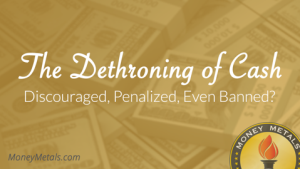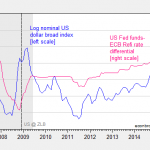Stock market gyrations and deteriorating global economic conditions in the early goings of 2016 sent investors fleeing for safety. Or at least what is commonly thought to be safety.

Many in the financial media are now trotting out the bromide that “cash is king.” A sampling of recent headlines illustrates how pervasive the thinking is:
But how can cash be king when central banks around the world are working diligently and creatively to PUNISH holders of cash?
The latest country to take the plunge into negative interest rates is Japan. On January 29, the Bank of Japan pushed its deposit rate into negative territory.
And our own Federal Reserve just asked U.S. banks this week make sure they, too, are ready for negative interest rates.
Central bankers have proven that 0% is no floor when it comes to interest rates. But negative interest rates create some peculiar problems. In theory, assessing interest on deposits rather than paying it out encourages funds to flow back into the economy. Negative rates make banks more apt to lend and consumers more likely to spend.
People Herded into Electronic Accounts So Negative Interest Rates Can Be Imposed
Unfortunately for the banks, though, negative rates encourage withdrawals of cash for hoarding. After all, dollar bills that pay 0% interest have a higher yield than savings accounts that charge interest!
The government surely doesn’t want to encourage a flight to physical cash. It drains the banks of their liquidity. And when cash transactions take place outside the banking system, authorities can’t track them, and that makes tax collectors jealous.













Leave A Comment